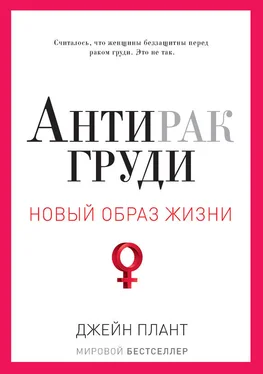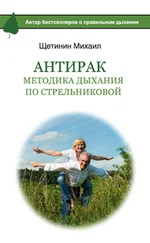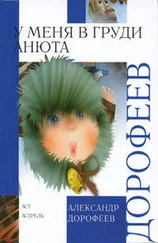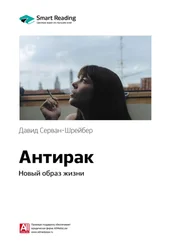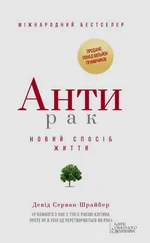Takeyama, M. and others, 1989. Enzyme immunoassae of gastrin-releasing, peptide (GRP)-like immunoreactivity in milk. Int. J. Pept. Protein Res. , 34 (1), 70–74.
Ducroc, R. and others, 1995. Immunoreactive substance P and calcitonin-gene-related peptide (CGRP) in rat milk and in human milk and infant formula's. Am. J. Clin. Nutr., 62 (3), 554–558.
Lembeck, F. and others, 1979. Substance P as neurogenic mediator of antidromic vasodilation and neurogenic plasma extravasation. Arch. Pharmacol. , 310 (2), 175–183.
Khare, V. K. and others, 1998. The neuropeptide/mast cell secretagogue substance F is expressed in cutaneous melanocyticlesions. Journal of Cutaneous Pathology , 25 (1), 2-10.
Ducroc, R. and others, 1995. Immunoreactive substance P and calcitonin-gene-related peptide (CGRP) in rat milk and in human milk and infant formula's. Am. J. Clin. Nutr. , 62 (3), 554–558.
Faulkner, A., 1998. Insulin-like growth factor 1 concentrations in milk and plasma after growth hormone treatment. Biochemical Society Transactions , 26 (4), 386; Silanikove, N. and others, 1998. Metabolic and productive response of dairy cows to increased ion supplementation at early lactation in warm weather. Journal of Dairy Research , 65 (4), 529–543; Ginjala, V. and others, 1998. Determination of transforming growth factor-beta 1 (TGF-beta 1) and insulin-like growth factor-1 (IGF-1) in bovine colostreum samples. Journal of Immunoassay , 19 (2–3), 195–207; Schober, D.A. and others, 1990. Perinatal expression of type 1 IGF receptors in porcine small intestine. Endocrinology , 126 (2), 1125–1132.
Rao, R.K. and others, 1998. Luminal stability of insulin-like growth factor-1 and -2 in developing rat gastrointestinal tract. Journal of Pediatric Gastroenterology and Nutrition , 26 (2), 179–185.
Parisot, J.P. and others, 1999. Altered expression of the insulinlike growth factor-1 receptor in a tamoxifen-resistant human breast cancer cell line. Br. J. Cancer , 79 (5–6), 693–700; Sciacca, L. and others, 1999. Insulin receptor activation by insulin-like growth factor– 2 in breast cancers: evidence for a new autocrine/paracrine mechanism. Oncogene , 18 (15), 2471–2479; Grothey, A. and others, 1999. The role of insuline-like growth factor and its receptor in cell growth transformation, apoptosis, and chemoresistance In solid tumors. Journal of Cancer Research and Clinical Oncology , 125 (3–4), 166–173; Perks, C. M. and others, 1999. Activation of integrin and ceramide signalling pathways can inhibit the mitogenic effect of insulin-like growth factor-1 (IGF-1) in human breast cancer cell lines. Br. J. Cancer , 79 (5–6), 701–706; de Cupis, A. and others, 1998. Responsiveness to hormone, growth factor and drug treatment of a human breast cancer cell line; comparison between early and late cultures. In Vitro Cellular and Developmental Biology – Animal , 34 (10), 836–843; Kobari, M. and others, 1998. The inhibitory effect of an epidermal growth factor receptor specific tyrokinase inhibitor on pancreatic cancer cell lines was more potent than inhibitory antibodies against the receptors for EGF and IGF-1. International Journal of Pancreatology , 24 (2), 85–95; Gooch, J.L. and others, 1998. Interleukin 4 inhibits growth and induces apoptosis in human breast cancer cells. Cancer Res. , 58 (18), 4199–4205; Choki, I. and others, 1998. Osteobiast-derived growth factors enhance adriamycin-cytostasis of MCF-7 human breast cancer cells. Anticancer Res. , 18 (16A), 4213–4224; Jackson, J.G. and others, 1998, Insulin receptor substrate-1 is the predominant signalling molecule activated by insulin-like growth factor-1, insulin, and interleukin– 4 in estrogen receptor-positive human breast cancer cells. Journal of Biological Chemistry , 273 (16), 9994-10 003; Westley, B.R. and others, 1998. Interactions between the oestrogen and IGF signalling pathways in the control of breast epithelial cell proliferation. Biochemical Society Symposium , 63, 35–44; Surmacz, E. and others, 1995. Overexpression of insulin receptor substrate 1 (IRS-1) in the human breast cancer cell line MCF-7 induces loss of estrogen requirements for growth and transformation. Clinical Cancer Research , 1 (11), 1429–1436.
Untersasser, G. and others, 1999. Proliferative disorders of the aging human prostate: involvement of protein hormones and their receptors. Experimental Gerontology , 34 (2), 275–287; Xu, Z.D., 1999. Hammerhead ribozyme-mediated cleavage of the human insulin-like growth factor-2 ribonucleic acid in vitro and in prostate cancer cells. Endocrinology , 140 (5), 2134–2144; Marelli, M.M. and others, 1999. Luteinizing hormone-releasing hormone agonists interfere with the antagonic activity of the insulin-like growth factor system in androgen-dependent prostate cancer cells. Endocrinology , 140 (1), 329–334; Larnharzi, N. and others, 1998. Growth hormone-releasing hormone antagonist MZ-5-156 inhibits growth of DY-145 human androgen-independent prostate carcinoma in nude mice and suppresses the levels and mRNA expression of insulin-like growth factor– 2 in tumors. Proc. Natl. Acad. Sci. USA , 95 (15), 8864–8868; Wang, Y.Z. and others, 1998. Sex hormone-induced prostatic carcinogenesis in the noble rat; the role of insulin-like growth factor-1 (IGF-1) and vascular endothelial growth factor (VEGF) in the development of cancer. Prostate , 35 (3), 165–177.
He, Y., 1999. Comment on the Association between InsulinLike Growth Factor-1 (IGF-I) and Bone Mineral Density: Further Evidence Linking IGF-I to Breast Cancer Risk. Journal of Cellular Endocrinology and Metabolism , 84, 1760.
Perks, C. M. and Holly, J.M.P., 2000, Insulin-Like Growth Factor Binding Proteins (IGFBPs) in Breast Cancer. Journal of Mammary Gland Biology and Neoplasia , 5, 75–84.
Murphy, M.S. and others, 1998. Growth factors and the gastrointestinal tract. Nutrition , 14 (10), 771–774; Buts, J.F., 1998, Bioactive factors in milk. (in French.) Archives de Pediatrie , 5 (3), 298–306.
Shen, W.H. and others, 1998. Stability and distribution of orally administered epidermal growth factor in neonatal pigs. Life Sciences , 63 (10), 809–820; Rao, R.K. and others, 1998. Bovine milk inhibits proteolytic degradation of epidermal growth factor in human gastric and duodenal lumen. Peptides , 19 (3), 495–504; McCuskey, R.S. and others, 1997. Effect of milkborne epidermal growth factor on the hepatic microcirculation and Kupfer cell function in suckling rats. Biology of the Neonate , 7 (3), 202–206; Oguchi, S. and others, 1997. Growth factors in breast milk and their effect on gastrointestinal development. Chang Hua Min Kuo Hsiao Ehr Ko I Hsuek Tsa Chih , 38 (5), 332–337.
Salomon, D.S. and others, 1999. Cripto: a novel epidermal growth factor (EGF)-related peptide in mammary gland development and neoplasia. Bioessays , 21 (1), 61–70; Chou, Y.C. and others, 1999. Induction of mammary carcinomas by N-methyl-N-nitrosurea in ovariectomized rats treated with epidermal growth factor. Carcinogenesis , 20 (4), 677–684; Kurtz, A. and others, 1998. Local control of mammary gland differentiation: mammary-derived growth inhibitor and pleiotrophin. Biochemical Society Symposium , 63, 51–69; Taylor, M.R. and others, 1997. Lactadherin (formerly BA46); a membrane-associated gycoprotein expressed in human milk and breast carcinomas, promotes Arg-Gly-Asp (RGD)-dependent cell adhesion. DNA and Cell Biology , 16 (7), 861–869.
Читать дальше
Конец ознакомительного отрывка
Купить книгу
